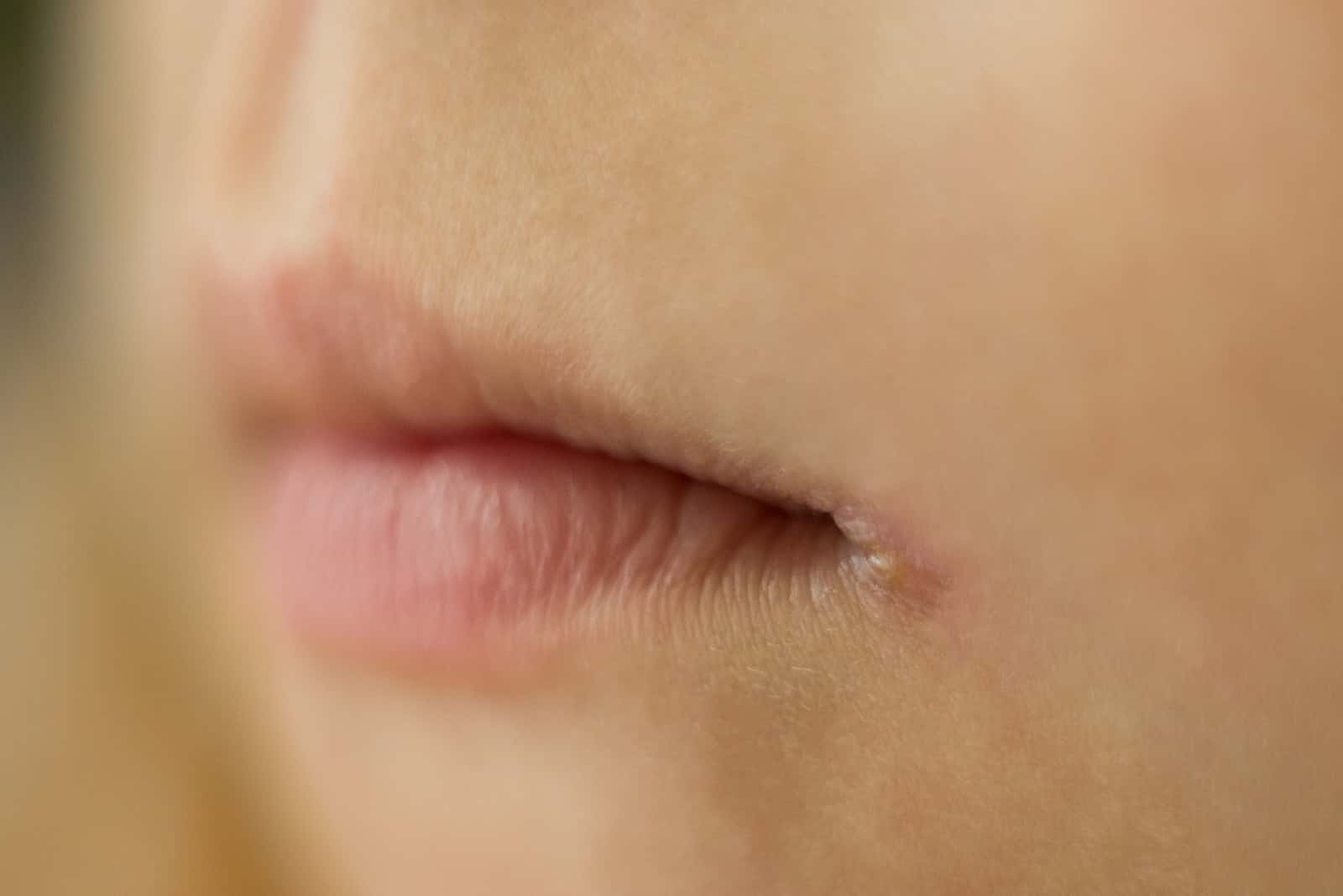
If you ever get sore red cracks at the corners of your mouth, you might need some advice on angular cheilitis. That’s the technical term for those cracked corners. Sometimes doctors call the condition perlèche. Regardless of what you call them, those cracks and fissures are very uncomfortable. Knowing how to prevent or treat them is important. In certain cases, persistent angular cheilitis might lead to a diagnosis.
Could Celiac Disease Be Causing Angular Cheilitis?
Q. I had angular cheilitis for years. Then I was diagnosed with celiac disease, an inability to tolerate gluten.
Once I went gluten-free, the angular cheilitis went away. Angular cheilitis can be one of the many symptoms of celiac disease.
A. Angular cheilitis is a common irritation of the skin at the corners of the mouth. It may have many triggers. As you point out, celiac disease is among them. Treating this autoimmune condition carefully with a scrupulously gluten-free diet is the best advice on angular cheilitis we could give in this situation. To learn more about celiac disease, you may want to read this post and that one. You may also want to listen to this update. It is an interview with Dr. Joseph A. Murray and Dr. Leonardo Trasande.
A Dentist Offers Advice on Angular Cheilitis:
Q. As a dentist, I see angular cheilitis very often. This is a common problem for elderly persons with old, worn-out dentures. The denture teeth are so worn that the bite is “closed” and this creates an excessive wrinkle in the corners of the mouth. Generally, there is also a chronic fungal infection under the dentures as well.
We dentists prescribe an ointment with a mixture of an antifungal and a steroid. You can get the same effect without a prescription by mixing Monistat with hydrocortisone. The ointment form works best.
Of course, you don’t have to be an old denture wearer to get angular cheilitis. Other people may also develop these painful fissures. I know a lot of your readers like to use home remedies for their problems, but in this case the “real” drugs work best.
Treating Angular Cheilitis:
A. Thank you for the advice on angular cheilitis, a condition in which one or both corners of the mouth become red, sore and even cracked. In many cases, this part of the mouth remains moist, making it hospitable for yeast overgrowth. That’s why an antifungal such as Monistat works so well. Topical hydrocortisone or a prescription steroid calms the inflammation and pain.
Monistat is not the only OTC antifungal medicine that could prove helpful. Some readers have found that athlete’s foot cream is very useful in treating perlèche. As the dentist pointed out, some people suffer repeated fungal infections that make the cracks in the corners of the mouth red and sore.
Could Cabbage Juice Help Heal Angular Cheilitis?
Q. I’d like to offer my advice on angular cheilitis, painful cracks at the corners of the mouth. We have had great success with cabbage juice, either squeezed out and applied or by holding cut cabbage against the sore. A cabbage salad accompaniment doesn’t hurt! Healing begins almost immediately.
A. Cabbage is loaded with nutrients. We don’t know why it would help angular cheilitis, but it certainly can’t hurt.
Advice on Angular Cheilitis–Use Athlete’s Foot Cream:
Q. I use over-the-counter athlete’s foot cream from the dollar store as an overnight remedy for cracks in the corners of the mouth. I finally figured this out for myself after many years of relying upon lip balm alone.
A. You are describing angular cheilitis (AKA perlèche). It is sometimes caused by moisture trapped in the corners of the mouth. This can lead to overgrowth of fungus. That’s why an antifungal cream for athlete’s foot can sometimes help this condition.
Cathy got a shock on the antifungal cream she was prescribed:
“I went to my PCP with the cracking in the corner of my mouth. He prescribed a cream that I had to have filled at the pharmacy. Imagine my surprise when I read the label, “diaper cream”. As a former child care provider, I am aware that lots of diaper rashes are caused by a fungal infection. The cream did help, by the way, and cleared up the problem within a couple of weeks. He also recommended a B-complex to be taken at night. Since taking the vitamin complex, I have not had the problem return.”
Deficiencies as a Cause:
This painful and unsightly condition may also be caused by nutritional deficiencies. You should be checked to see whether you are getting enough B vitamins, iron and zinc.
Barbara left this comment:
“I used to get cracks in the corners of my mouth. Very painful. I was told it was a vitamin B deficiency. Since I started taking vitamin B supplements, I haven’t had even ONE crack.”
Carole agreed:
“B2, aka Riboflavin, is the specific B vitamin. It is an almost instant cure. 2 tablets and 12 hours later, gone.
“Nystatin is the cream of choice for fungal infection. It seems to occur in kids that are going thru a growth spurt particularly.”
Are You Inadvertently Causing the Cracks in the Corners of the Mouth?
Occasionally, people discover that they are using a product that contributes to symptoms of angular cheilitis. One reader wrote to us about toothpaste.
Q. Many years ago I had severely cracked corners of my mouth. It really made my mouth sore.
I discovered quite by accident that it was caused by an ingredient in the toothpaste I was using. When I changed brands the problem disappeared.
Additional Causes of Angular Cheilitis:
A. Angular cheilitis (perlèche) is the term doctors give to painful cracks in the corners of the mouth. They can be triggered by a reaction to chemicals in sunscreen, cinnamon or toothpaste.
Betty reported:
“I tend to suffer from these cracks as well. Many toothpastes make my mouth burn, so I know I am sensitive to them. I now use just plain Colgate which seems to be ok. But I still occasionally get these cracks, so I have found that dabbing Listerine on them will clear them up quickly.”
Sherri noted:
“After having the cracks and roughness at the corners of my mouth for a while, my dermatologist told me to stop using toothpaste with a tartar control element. He suggested Arm & Hammer instead. He mentioned that lots of folks are allergic the tartar control ingredient. I followed his advice on angular cheilitis and have had no more cracks.”
Cindy found that toothpaste with SLS caused her problems:
“Have had ulcers in mouth, on & around lips for years. Seems like when one would just heal, another would appear somewhere else. Heard Dr. Oz casually mention that some people may be allergic to SLS (Sodium Lauryl Sulfate) in toothpaste. I changed toothpaste – no more ulcers.
“Then I got to thinking about my years of complexion problems (80 yr old) – was using Neutrogena to cleanse face at the time (had tried many). Sure ’nuff, it’s in most cleansing products! Like magic, first time ever, my skin completely cleared up when I limited my use to non-SLS products!! Used an older hand lotion with out checking and hands turned red, and became very swollen – yep, SLS.”
Mary agreed:
“Yes, toothpaste can make your mouth sore! Especially if you have a dry mouth, as in Sjogren’s Syndrome. I’ve experimented with various toothpastes and found that those that contain SLS (sodium lauryl/laureth sulfate) not only make my mouth sore/burning, but also cause the skin (mucosa?) inside my mouth to slough off in small white sheets. Another ingredient in toothpaste can also cause burning in my mouth: mint flavoring. Again, for me, this is due to my Sjogren’s Syndrome dry mouth.”
Coconut Oil Made a Difference:
This advice on angular cheilitis doesn’t work for everyone, of course.
We heard from a mother who found a different approach to treating her daughter’s perlèche:
“My seven-year-old has had this condition for well over a year. Sometimes it seemed to get better, but would always return.
“A doctor told her to put Vaseline on it, but it just made it worse. Her dentist thought it was a vitamin or iron deficiency causing it, and this makes sense since her diet is poor. She is a picky eater.
“On a whim, we decided to try putting coconut oil on it twice a day, after brushing. I’d read up on the many benefits of coconut oil being anti-viral, anti bacterial, etc…
“The lesions started healing right away. If she doesn’t apply it, however, it seems to return, so we make sure to reapply twice a day. It has now been perhaps 3 months doing this, and the lesions are 95% healed. Until she starts eating better, we’ll continue applying the oil.”
Do you have any advice on angular cheilitis based on your own experience? Share it with others in the comment section below.


